Genoise (Vanilla Sponge Cake)
Light as a feather Genoise (vanilla sponge cake). This cake will absorb lots of syrup for an extra layer of flavor and moisture.
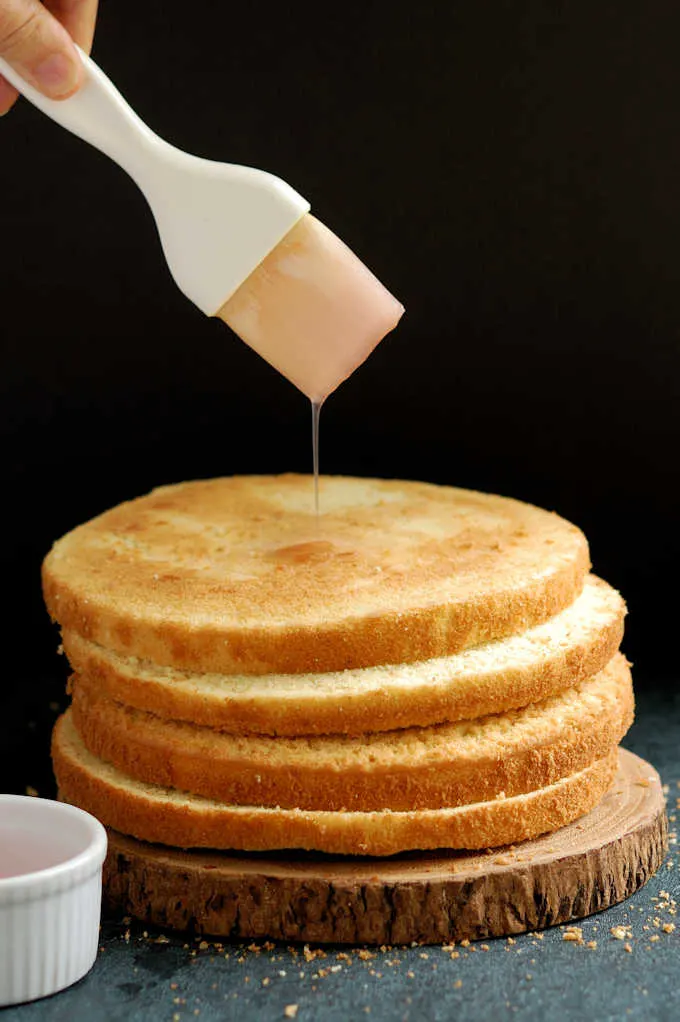
Table of contents
What is Genoise?
Genoise is, basically, a vanilla sponge cake. What is a sponge cake? A sponge type cake gets most of it’s structure from whipped eggs.
Like every sponge cake recipe, Genoise is balanced more towards structure builders than tenderizers. This means the cake is not only light and airy from the whipped eggs, it’s also strong and resilient.
Hmmm, that is not a very tempting description of a cake. Don’t we always want a super-tender, moist cake that “melts in your mouth”?
Bear with me though, because we’re not done making a great Genoise once it’s baked. The next step is to add another layer of flavor and moisture with a generous dose of sugar syrup.
I’ve already shared recipes for Vanilla Butter Cake and Velvety White Cake. If those cakes are so good, and they are, why do we need another recipe?
Well, different types of cakes are good in different ways.
I love a basic “yellow” cake or “white” cake because it’s soft and buttery with a very tender cake crumb. It’s perfect filled and iced with Italian Meringue Buttercream.
When I want a lighter cake doused with a flavorful syrup and filled with mounds of whipped cream or mousse, it’s time to make a classic Genoise.
Ingredients
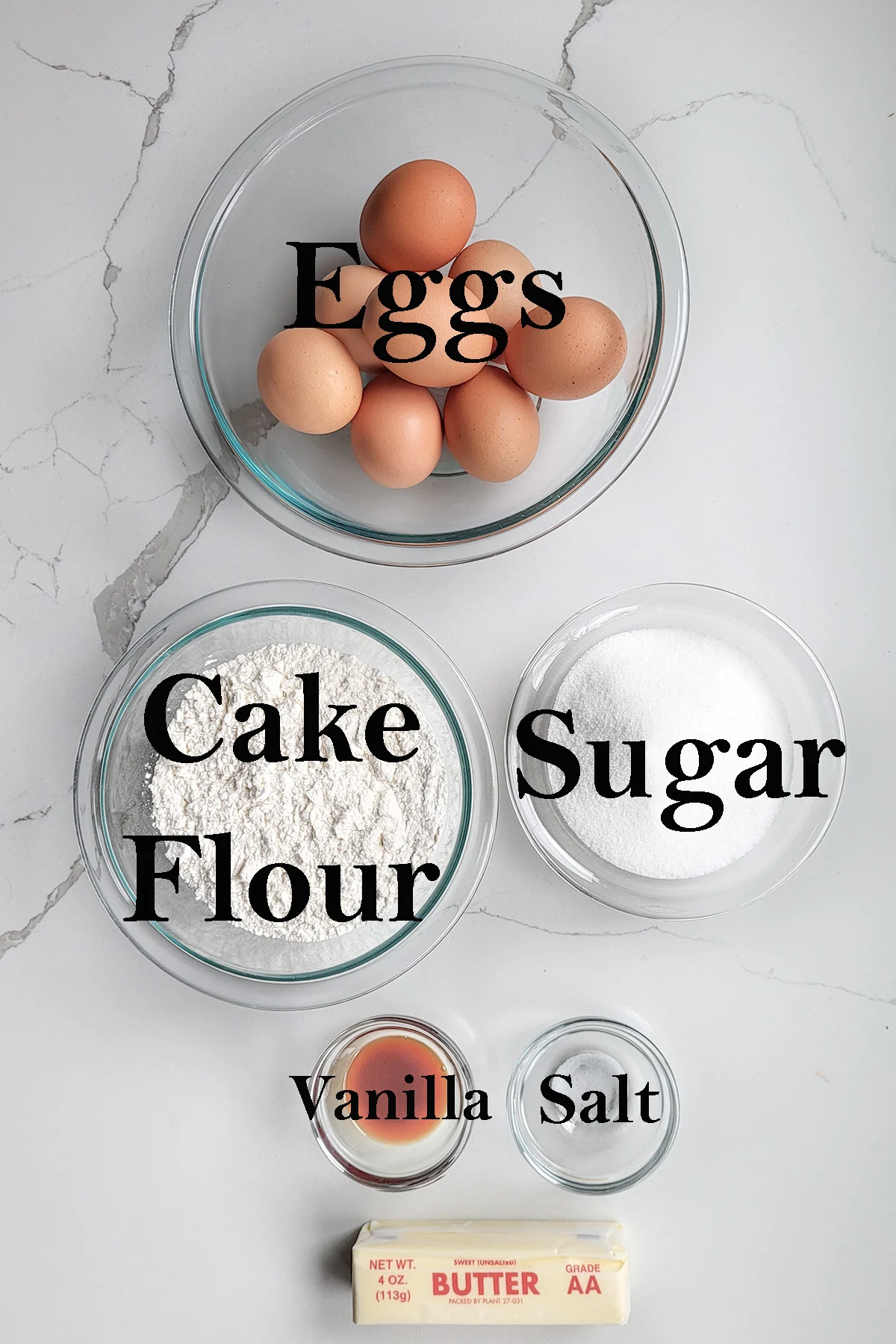
Ingredient Notes
- Butter – The butter is browned to add a layer of nutty flavor to the cake.
- Eggs – Whole eggs are whipped for a strong cake structure.
- Cake Flour – Has a lower protein content than all purpose flour so it makes a softer cake. Bleached cake flour is acidic which tenderizes the cake and allows the batter to absorb more liquid for a moister cake.
Process Photos
See the recipe card for detailed instructions and measurements.
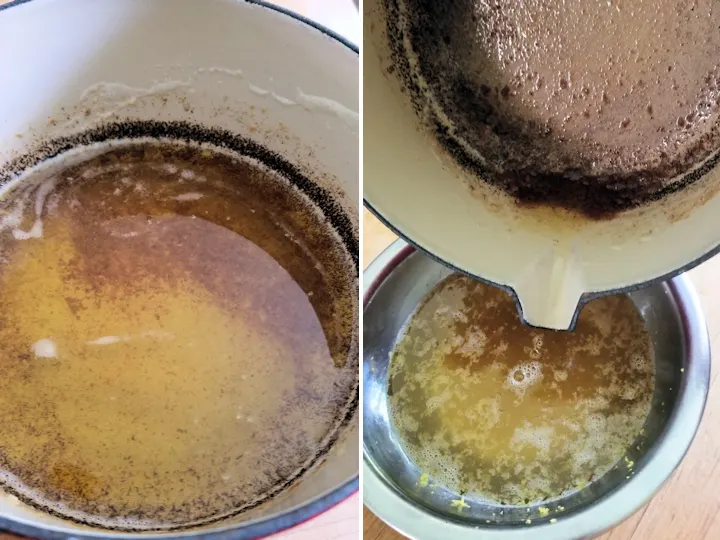
- Melt the butter in a small saucepan, cook until the milk solids sink to the bottom of the pan and become brown.
- Drain the butter into a medium bowl, leaving the milk solids in the pan. Stir the vanilla into the browned butter and set aside.
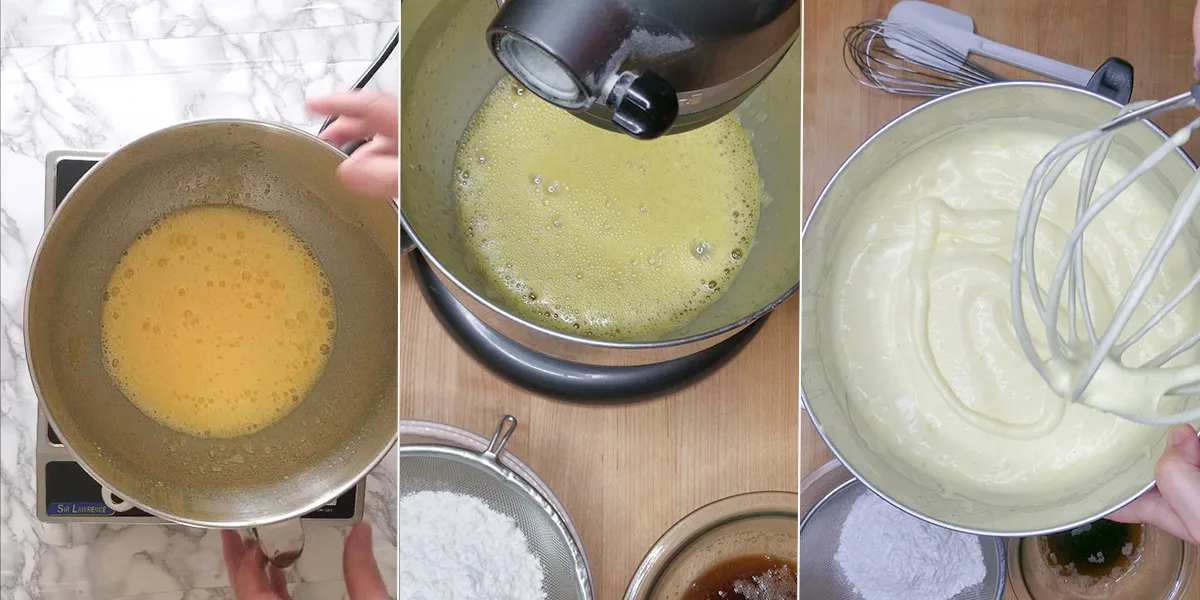
- Combine the eggs and sugar in a mixing bowl. Whisk the eggs over simmering water until they are warm to the touch.
- Transfer the bowl to the mixer. With the whisk attachment, whip the eggs until they are light and aerated.
- If you lift the whisk and drizzle the egg mixture it should fall in a “ribbon” on the surface. This is called the ribbon stage.
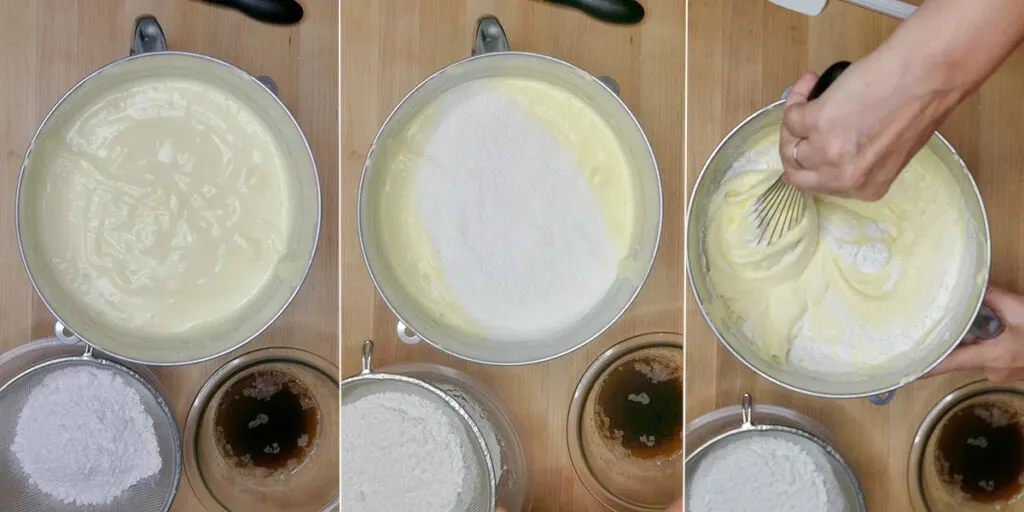
- Gather the whipped eggs, flour and browned butter.
- In two batches, sift the flour over the eggs and fold in with a hand whisk.
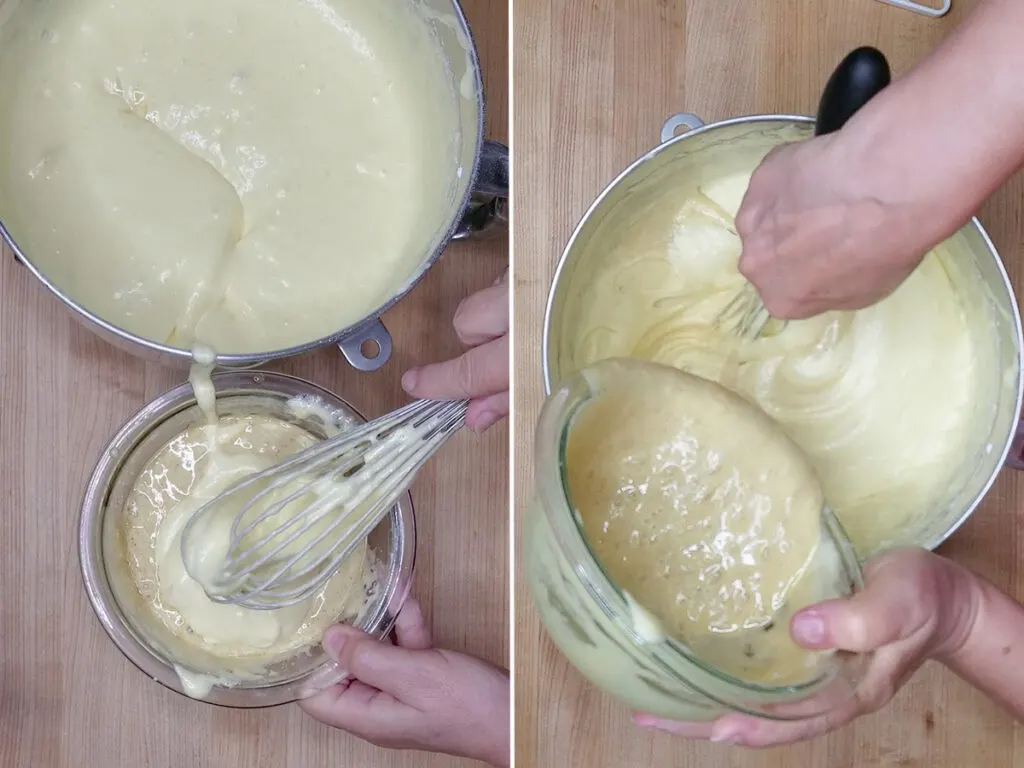
- Add a cup of the batter to the browned butter and whisk to combine.
- Add the lightened butter back into the batter and fold just until combined. Don’t overfold.
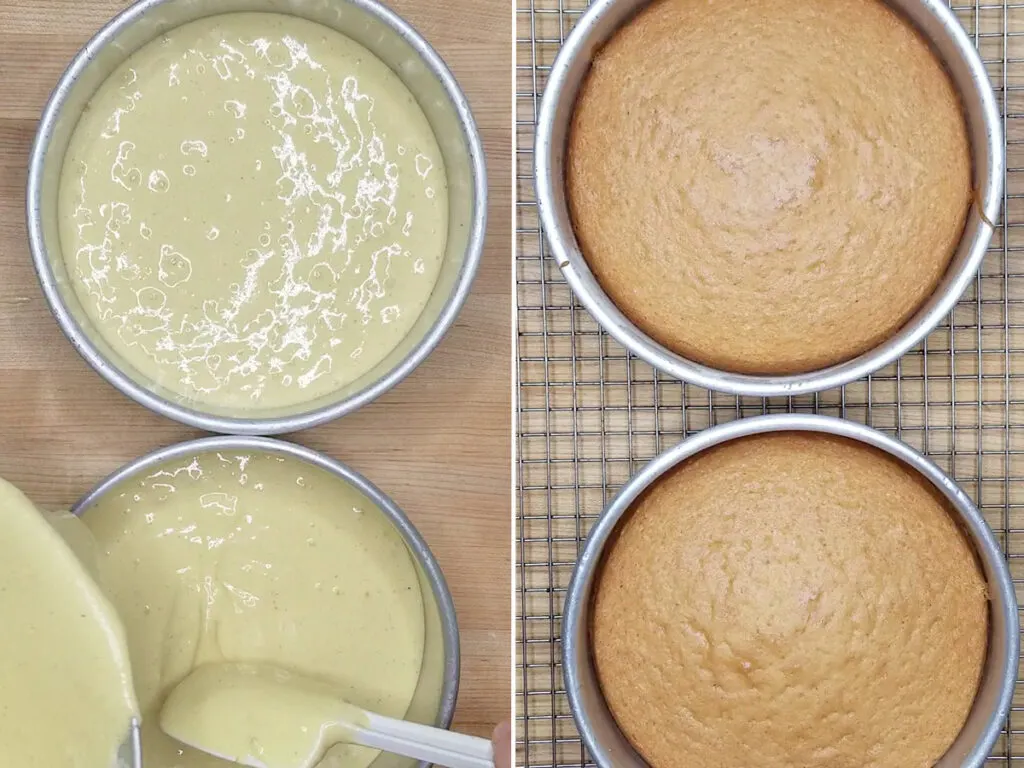
- Divide the batter between the two pans.
- Bake until the cake springs back when lightly pressed in the center.
Pastry Chef tips for making a great Genoise (vanilla sponge cake)
- Genoise sponge cake can take in a lot of syrup and maintain it’s lovely, light crumb.
- I’m partial to using alcohol to amp up the flavor – remember, alcohol enhances other flavors! The liquor flavor also gives your cake a sophisticated European flare.
- Use a liquor that compliments the flavors in the cake. Rum for chocolate, Limoncello for lemon, Grand Marnier for orange. I think you get the idea.
- If you don’t want to use alcohol you can use vanilla, citrus zest or juice to flavor the syrup.
- Whether you add the alcohol or not, make the syrup very flavorful so you can really taste it when you eat the cake.
Serving Tips
Because Vanilla Genoise is so light and airy, I particularly like it filled with whipped cream and fresh fruit, as in this Peach Melba Cake.
Genoise is also delicious filled with Chocolate and Vanilla Pastry Cream for a version of Italian Rum Cake.
Storage
The genoise layers can be stored at room temperature for 2-3 days. If you use a perishable filling in the cake (like cream) the cake should be refrigerated. The un-iced cakes can be frozen for up to a month.
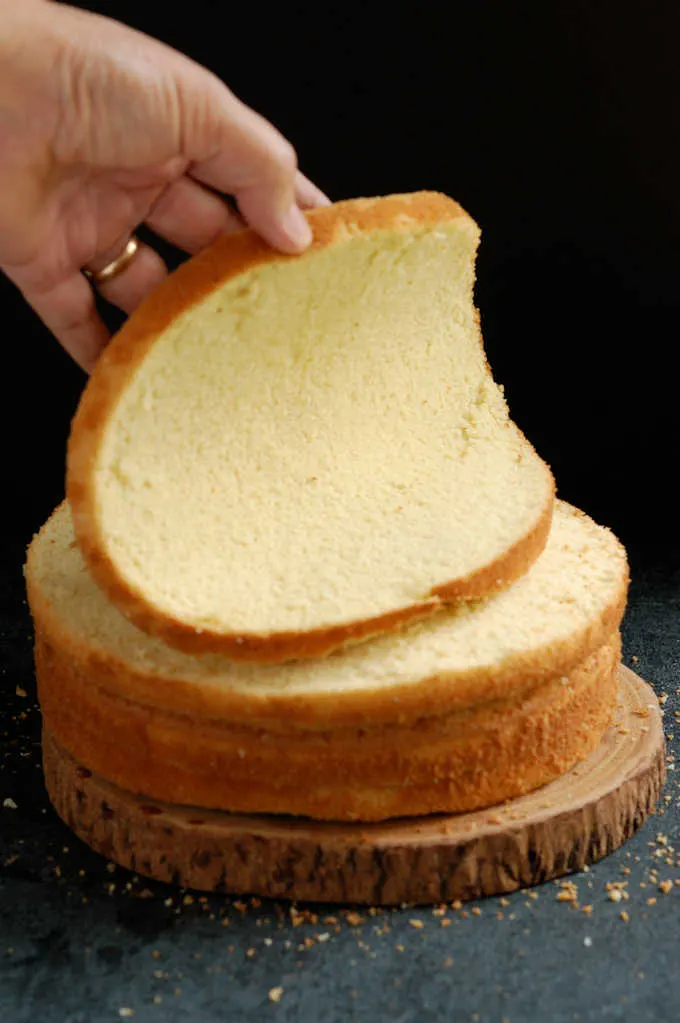
Because of the high proportion of egg, the cake is very spongy and flexible. This allows the cake to take in lots of syrup and still remain light and airy.
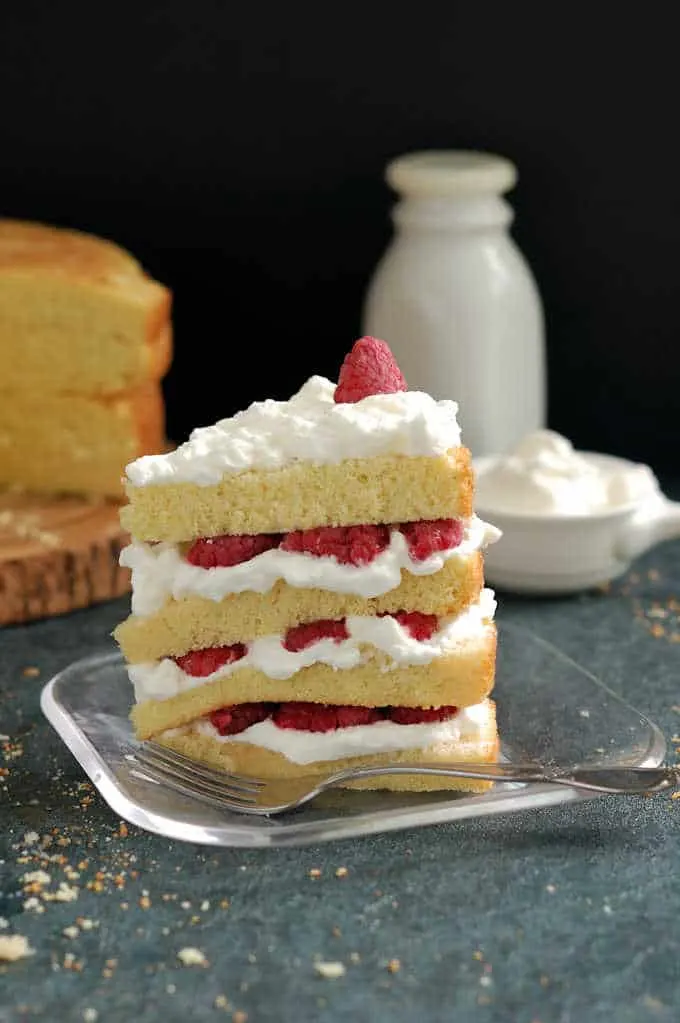
If you’re a chocoholic, try my Chocolate Genoise for a real treat.
If you love this recipe as much as I do, I’d really appreciate a star rating and a quick comment. Ratings and comments help my recipes show in search results. Thanks!
Vanilla Genoise Sponge Cake
Video
Ingredients
- 4 ounces unsalted butter (½ cup)
- 1 tablespoon vanilla extract
- 8 large eggs (room temperature)
- 8 ounces granulated sugar (1 cup)
- ¼ teaspoon table salt
- 7 ¼ ounces cake flour (1 ½ cups plus 2 tablespoons, see note)
Assembly
- 1 ½ cups simple syrup (flavored with liquor or extract of your choice)
- Frosting of your choice
Instructions
- Line the bottom of two 8" cake pans with a parchment round, or butter and flour the pan. Preheat the oven to 350 °F (don't use the convection setting).
- Melt 4 ounces unsalted butter in a small saucepan, cook until the milk solids sink to the bottom of the pan and become brown. Drain the browned butter into a medium bowl, leaving the milk solids in the pan. Stir 1 tablespoon vanilla extract into the browned butter and set aside. Discard the milk solids.
- Put 8 large eggs and 8 ounces granulated sugar with ¼ teaspoon table salt in a mixer bowl. Set the bowl over a pan of simmering water (don't let the bowl touch the hot water) and whisk until the eggs are slightly warmer than body temperature. Put the bowl onto the mixer with the whisk attachment and whip on high speed until the eggs are tripled in volume.
- Sift half the flour over the egg mixture and use a balloon whisk to fold, repeat with the remaining flour. Whisk 1 cup of the batter into the browned butter to lighten the butter, then whisk in another cup of batter.
- Fold the butter mixture into the batter just until combined. Don’t over mix or you’ll loose some volume in the cake. Divide the batter evenly between the pans.
- Bake until the cake springs back when pressed in the center, about 30 minutes. Remove the cake from the oven and cool in the pan for 10 minutes before turning out onto a cooling rack.
- Cool completely before filling and frosting. Trim the top of the cake to level, if desired, split each cake into two layers. Brush the layers generously with syrup before filling & icing.
Would you like to save this recipe?
As an Amazon Associate and member of other affiliate programs, I earn from qualifying purchases.


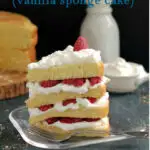
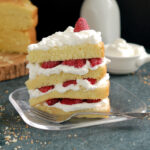





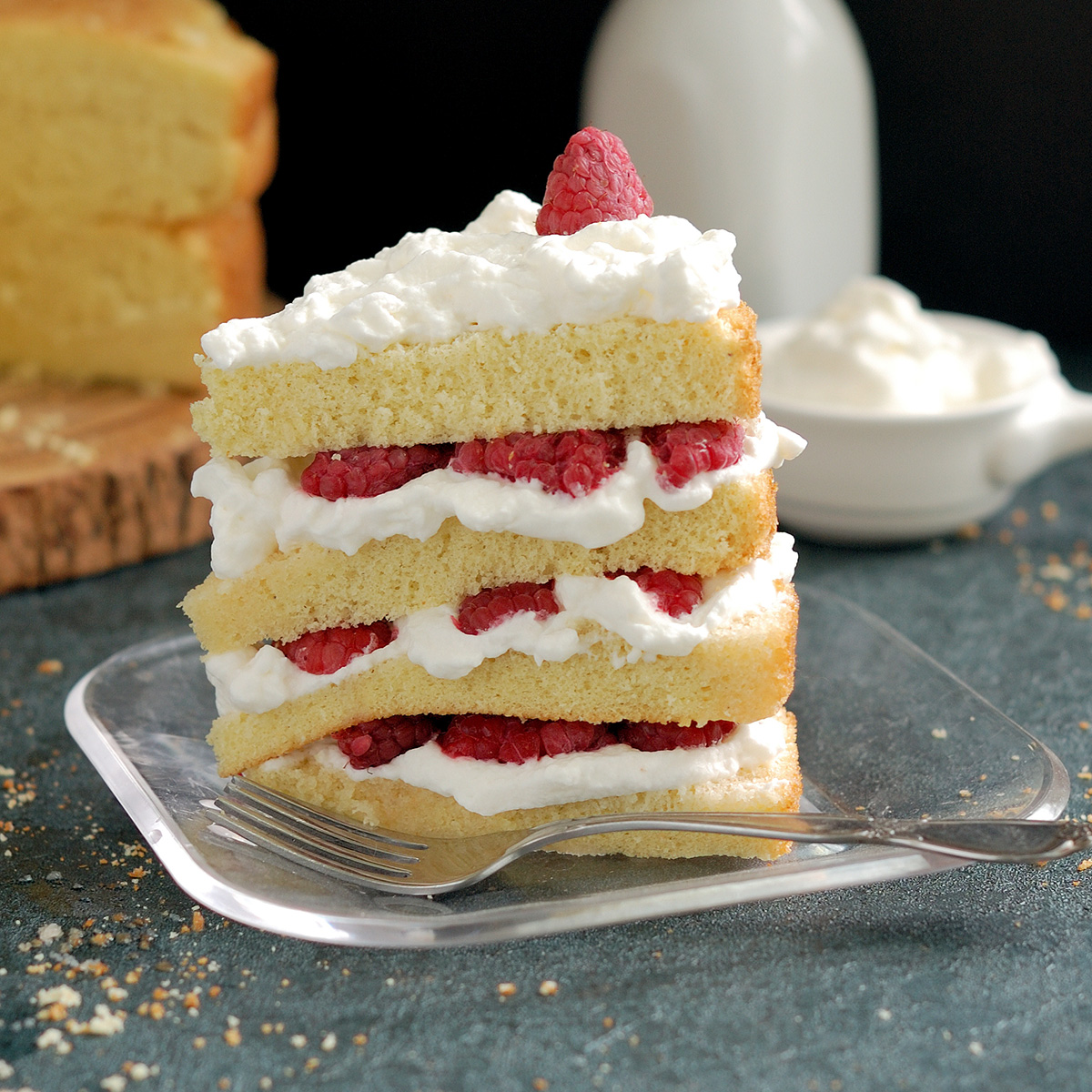
I was so excited for this recipe and everything looked good (eggs tripled in size, it still seemed very light and fluffy after folding in the flour and butter) but it did not rise AT ALL in the oven. If anything the cakes may have collapsed a bit (they were barely 1/2″ tall coming out of the pan and seem denser than I was expecting. Are they supposed to rise in the oven/be taller than that?
They should definitely rise in the oven. If you over fold the batter you can deflate the whipped eggs. Fold just until the ingredients are combined and no longer.
Hi,
I was just wondering if this could be converted to a cupcake recipe? If so what alteration to cooking time and/or temperature would you recommend?
Thank you.
Yes, you could certainly bake cupcakes from this recipe. Fill the pans no more than 2/3 so they have room to rise. Temp would be the same. I would start checking the cupcakes at about 8-10 minutes.